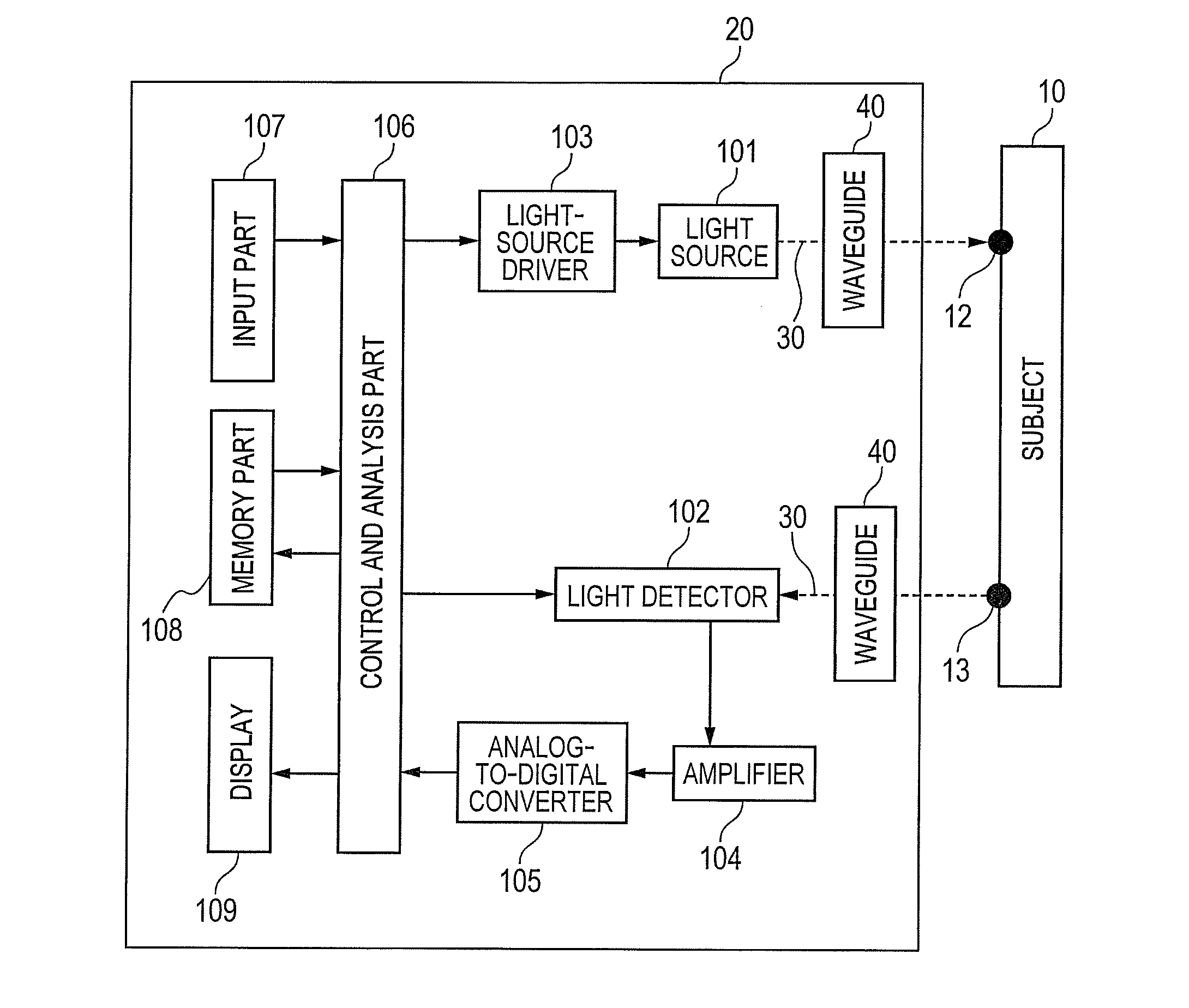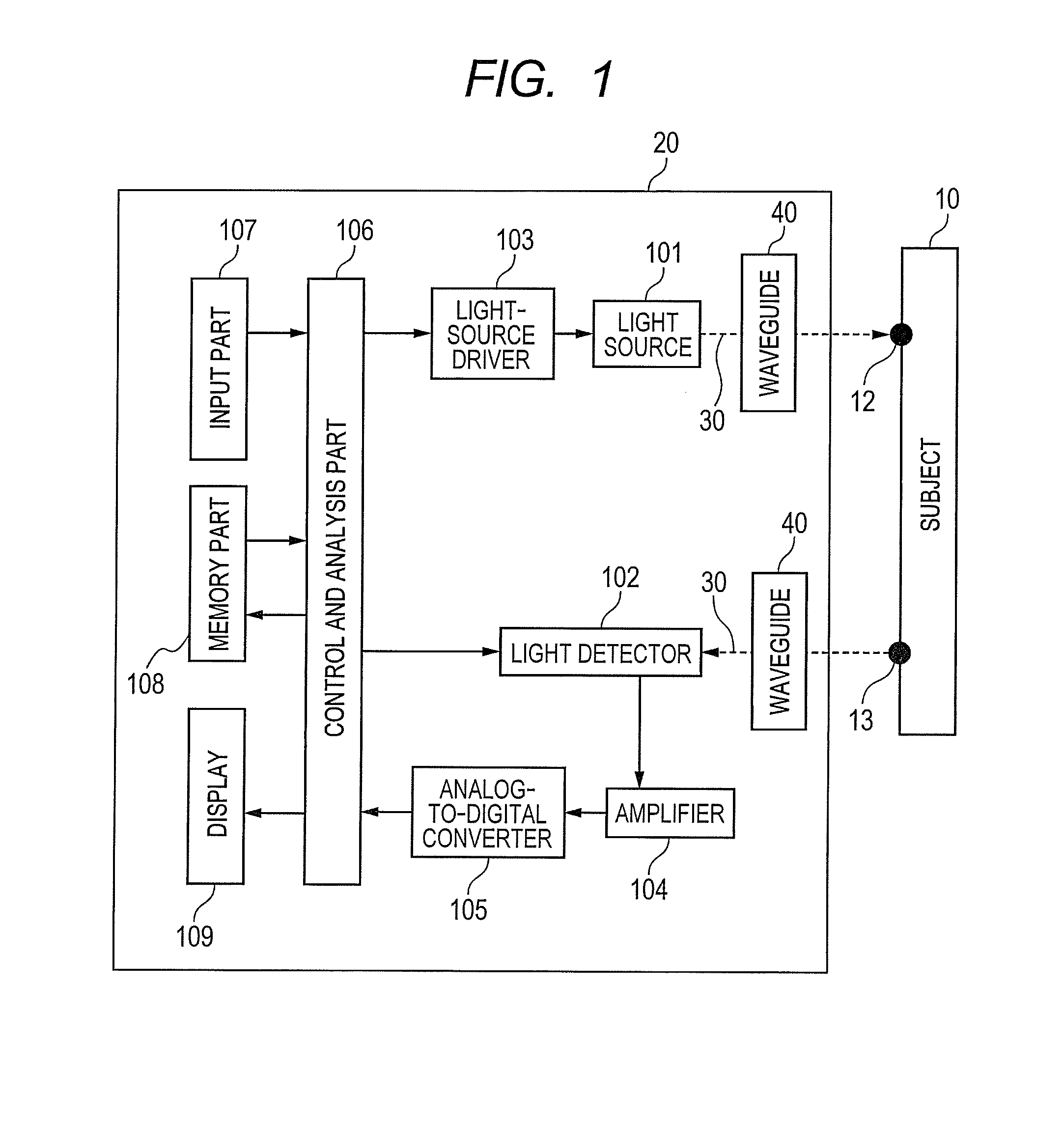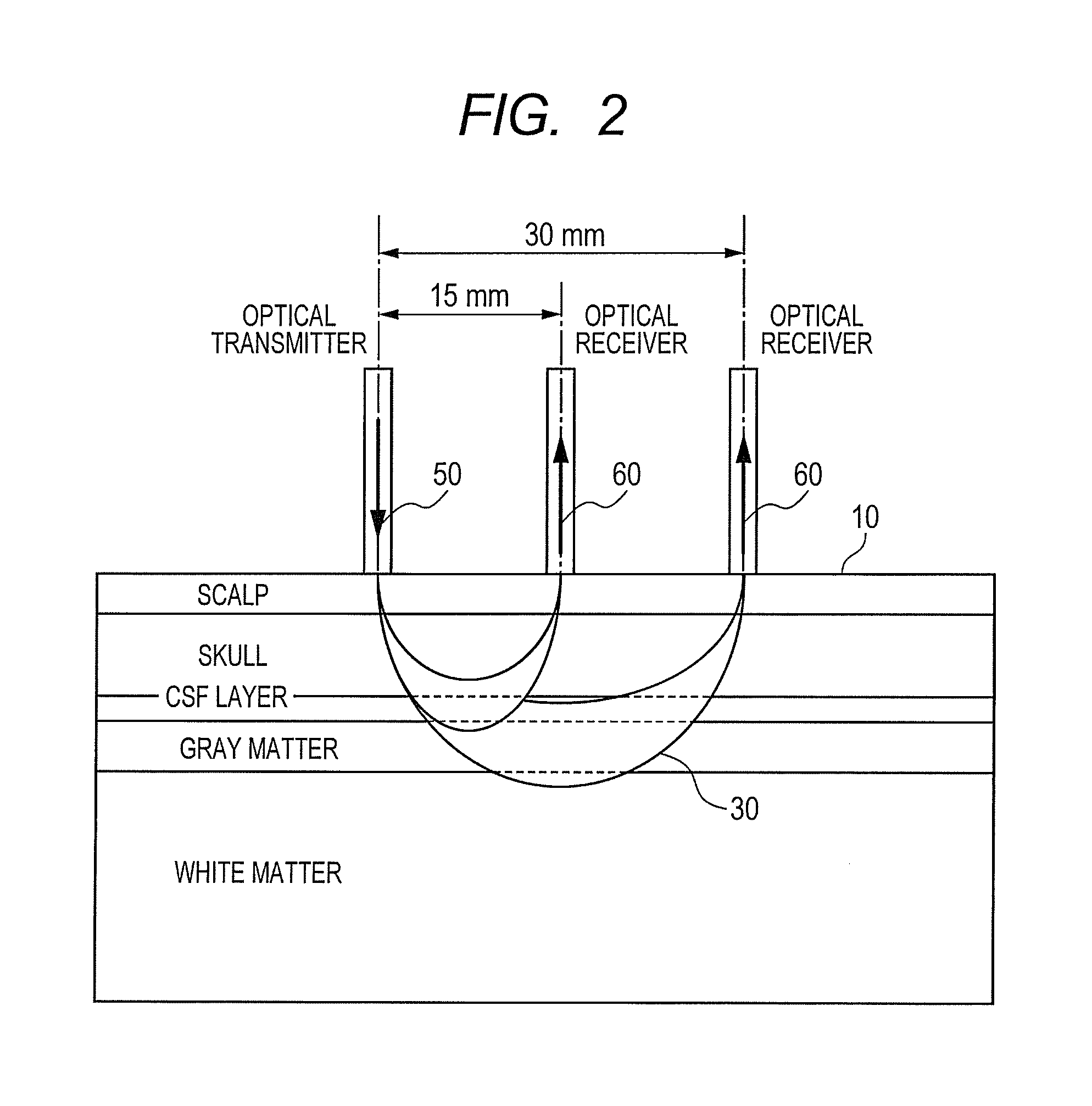Biological photometric device and biological photometry method using same
- Summary
- Abstract
- Description
- Claims
- Application Information
AI Technical Summary
Benefits of technology
Problems solved by technology
Method used
Image
Examples
first embodiment
[0100]FIG. 1 shows an example of a configuration of a device according to the present invention. In a biological photometric device that detects light which enters into a biological body, scattered, absorbed, and propagated in the biological body and then exits from the biological body, the light 30 which is irradiated from one or a plurality of light sources 101 included in a main body 20 enters into a subject 10 through a waveguide 40. The light 30 that enters into the subject 10 from an irradiation point 12 and then is transmitted and propagated in the subject 10 is detected by one or a plurality of light detectors 102 from a detection point 13 which is spaced apart from the irradiation point 12 through the waveguide 40. An SD distance is defined by a distance between the irradiation point 12 and the detection point 13 as described above.
[0101]Here, one or the plurality of light sources 101 may be a laser diode (LD) or a light emitting diode (LED) and one or the plurality of ligh...
second embodiment
[0172]In the first embodiment, the distribution density of the measurement points in the SD distance is varied depending on the probe arrangement. By adding only the optical receiver 60 to the probe arrangement described in the first embodiment, it is possible to easily increase the measurement points without lowering the temporal resolution. FIGS. 38A and 38B illustrate the probe arrangement where only the optical receiver 60 is added to the double density probe arrangement (see FIG. 8A) and arrangement of measurement points. The optical receiver is added in a position of the SD distance of 15 mm with respect to the optical transmitters 50. In this case, the measurement point in the SD distance 15 mm is doubled from the number of optical transmitters 50 if the measurement point for the optical transmitter 50 at the border above and below the probe arrangement is removed. The added optical receiver 60 receives light while being synchronized with at least one of the plurality of othe...
third embodiment
[0175]FIG. 39 illustrates an experimental configuration view using a whole head measuring type brain function photometric device 90. A local cerebral blood volume (oxygenated hemoglobin, deoxygenated hemoglobin, and total hemoglobin concentration length change) is obtained in the brain function photometric device 90 by irradiating light having a wavelength which belongs to the visible ray to the infrared region onto the head of the subject and detecting and measuring the light of signals with a plurality of wavelengths which passes through the subject with the same light detector. During the measurement, an appropriate stimulus / instruction may be issued to the subject 10 by a stimulus / instruction presentation device 415. The stimulus / instruction presentation device 415 is controlled by a control signal 414 from the calculator 412.
[0176]A plurality of light sources 402a to 402d having different wavelengths (if there are two wavelengths, for example, the wavelength of the light source...
PUM
 Login to View More
Login to View More Abstract
Description
Claims
Application Information
 Login to View More
Login to View More - R&D
- Intellectual Property
- Life Sciences
- Materials
- Tech Scout
- Unparalleled Data Quality
- Higher Quality Content
- 60% Fewer Hallucinations
Browse by: Latest US Patents, China's latest patents, Technical Efficacy Thesaurus, Application Domain, Technology Topic, Popular Technical Reports.
© 2025 PatSnap. All rights reserved.Legal|Privacy policy|Modern Slavery Act Transparency Statement|Sitemap|About US| Contact US: help@patsnap.com



